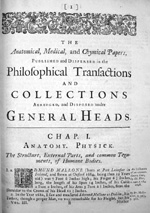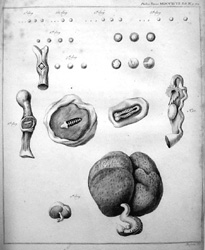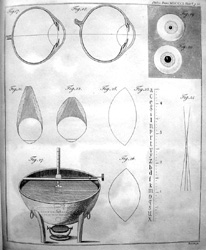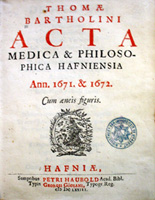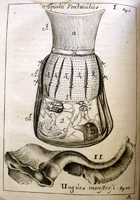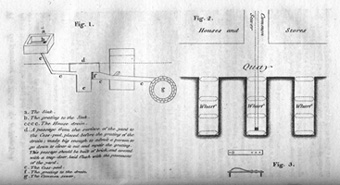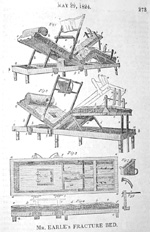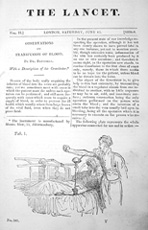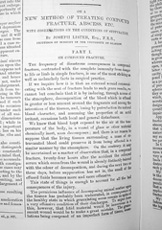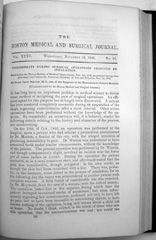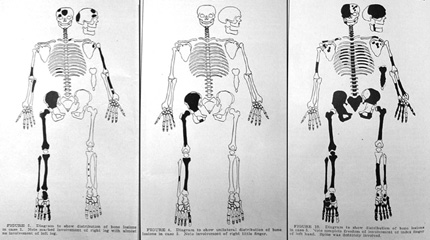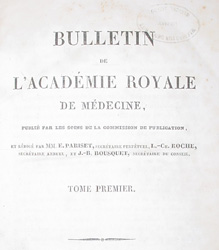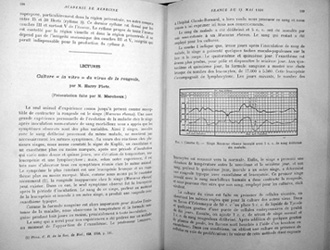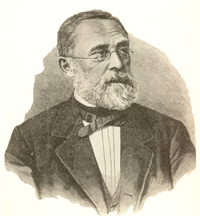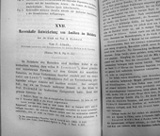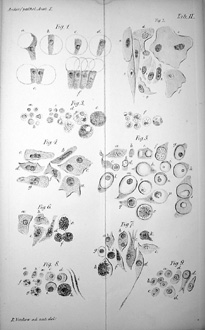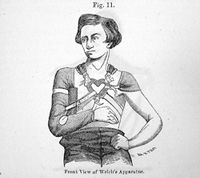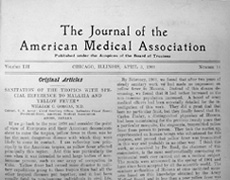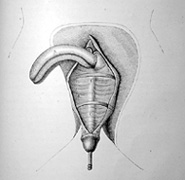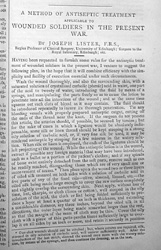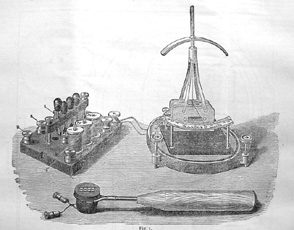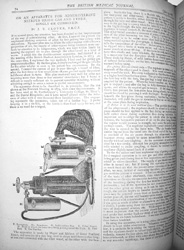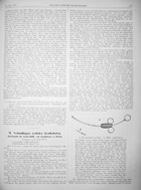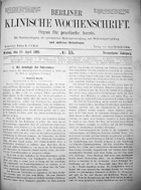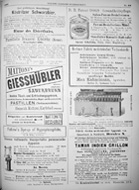Rare Medical Periodicals Collection
Scientific and medical periodicals began to appear in the late 17th century as a consequence of the development of newspapers – the increasingly common means of disseminating current information to a large, geographically dispersed audience – coinciding with the establishment and development of scientific and medical societies. In the early 17th century scientists created informal networks in which to exchange and further knowledge, mostly through correspondence. These networks grew into the formalized academies and societies of the latter part of the century. Scientific journals provided the means to record and disseminate information, news, and knowledge among the societies’ members in a timely manner.
The French Le Journal des Sçavans, generally cited as the first scientific journal, debuted in January 1665. Just three months later the first English scientific journal, Philosophical Transactions, began monthly publication. In 1797, the first U.S. medical journal, the Medical Repository, was printed in New York City. By 1800, about thirty scientific and medical journals had been established. By 1900, there were over 700.
The Becker Library’s Rare Medical Periodicals Collection includes almost 350 titles and over 11,000 volumes, dating from the late 17th century to the 20th century.
Philosophical Transactions of the Royal Society of London (1665-1886)
The Royal Society of London was founded in 1660 to promote the experimental philosophy of that time, furthering the intellectual principles proposed by Sir Francis Bacon. The second Royal Charter of 1663 refers to the Society as “The Royal Society of London for Improving Natural Knowledge.” Fellows of the Society were elected and met weekly to discuss scientific topics. The Society’s journal, Philosophical Transactions, debuted in 1665 and was the first English-language scientific journal. Henry Oldenburg, who served as the first secretary of the Society, was the first editor of the journal. The first issue featured nine articles, a selective listing of current philosophical books, and extracts from Oldenburg’s correspondence with leading European scientists.
Philosophical Transactions covered various scientific topics and published the work of many celebrated names in science and medicine. Isaac Newton had seventeen papers published, beginning with his “New Theory about Light and Colours,” which launched his scientific career in 1672. Early contributors often offered papers covering a variety of interests. For example, Robert Hooke, scientist and microscopist, submitted papers on astronomy, geology, architecture, and microscopy. Other notable contributors included not only Charles Darwin, Michael Faraday, William Herschel, and Edmund Halley but also physicians William Cowper, William Cheselden, Charles Bell, and Joseph Lister.
In 1705 the Society began publishing a series of abstracts, accumulating the work in special fields. In 1887 Philosophical Transactions of the Royal Society divided into two separate publications, one concentrating on the biological sciences and one on the physical sciences, both of which continue to publish monthly. Philosophical Transactions has the distinction of being the world’s longest-running scientific journal.
Acta medica et philosophica Hafniensia (1673-1680)
This journal was edited by Thomas Bartholin (1616-1680), a celebrated physician and professor of Anatomy at the University of Copenhagen. Bartholin, the son of physician and anatomist Caspar Bartholin, is best known for his discovery of the lymphatic system in humans and his revised editions of his father’s anatomy text, Institutiones anatomicae. In addition to medicine, Thomas Bartholin also studied theology, philosophy, archaeology, law, Arabic, and philology.
Acta medica et philosophica Hafniensia is sometimes called the first medical periodical, though the contents are only partly medical and include much botanical and zoological material. It consists primarily of short original observations on medical and natural subjects, and is written in Latin.
Medical Repository (1797-1824)
The Medical Repository was the first medical journal published in the United States. It was started by Elihu Hubbard Smith (1771-1798), Samuel Latham Mitchell (1764-1831), and Edward Miller (1760-1812). The founders intended to study diseases epidemiologically, and wanted in particular to combat the yellow fever epidemic prevalent at the time. The preface of the first volume announced the scope of the journal’s coverage: “The design of the papers which will be presented to the public under this title, is to illustrate the connection subsisting between climate, soil, temperature, diet, etc. and health.”
In the late 18th century, almost all medical journals were published in Europe. They were costly and it was difficult for American physicians to get their observations and results published in them. In addition, there was a growing sentiment fostering the independence of American medicine from its European traditions – publishing in the United States was yet another way to break the new Republic from its dependence on England and Europe for all its medical knowledge.
The Medical Repository began quarterly publication in July 1797. Elihu Hubbard Smith died prematurely at the age of 27 after the first volume was published. Articles by Smith were published posthumously in the second and third volumes. In 1801 the title was changed to the Medical Repository and Review of American Publications on Medicine, Surgery and the Auxiliary Branches of Philosophy. In 1812, after Edward Miller’s death, the journal’s title was changed to the Medical Repository of Original Essays and Intelligence. Mitchell remained an editor until 1821. The journal ceased publication in 1824. In all, 219 articles on topics such as contagious diseases, sepsis, fever, tuberculosis, climate and disease, meteorology and chemistry were published between 1797 and 1824.
The illustration on the left accompanied an 1803 Medical Repository article by Mr. Sabatier entitled “Hints towards promoting the Health and Cleanliness of the City of New York (applicable to all other Cities in America).” In the article Sabatier proposed several ideas to improve public health in his discourse about sewers, drains, kennels in the streets, docks, lodging houses, cemeteries, and paved streets. The image on the right shows the 1808 article, “Account of the Pulvis Parturiens, a Remedy for quickening Child-birth” by Dr. John Stearns of Saratoga County. Stearns is credited with reporting the first use of ergot in the induction of labor in America.
 |
The Lancet (1823- )
“A lancet can be an arched window to let in the light or it can be a sharp surgical instrument to cut out the dross and I intend to use it in both senses,” announced Thomas Wakley (1795-1862) in 1823 when he founded The Lancet. Wakley’s goal was to instruct, entertain, and reform. The journal included not only transcriptions of medical lectures but also theater reviews and political commentary. From its inception, The Lancet was independent of any medical or scientific organization.
The first issue featured a lecture by the eminent surgeon Sir Astley Paston Cooper (1768-1841) on the theory and practice of surgery. A few years later Wakley began a campaign against nepotism at Guy’s Hospital in London when The Lancet exposed Cooper’s son, also a surgeon, of bungling a relatively simple operation resulting in the patient’s death.
Wakley was interested in not only medical reform but also social reform. He became a radical candidate for Parliament, serving for Finsbury from 1835 to 1852, and advocating the interests of the working classes and for humanitarian reforms. Wakley was one of the main opponents of the stamp duty on newspapers in the 1830s; his campaign against the adulteration of food and drink resulted in the passing of the Food and Drug Act in 1860.
The Lancet continues today as one of the world’s foremost medical periodicals, publishing reports of research, lectures, cases, and general medical news.
Boston Medical and Surgical Journal (1828-1928); New England Journal of Medicine (1928- )
John Collins Warren (1778-1856) was the son of John Warren, a founder of the Harvard Medical School. The younger Warren studied at Harvard and in Europe, and then joined his father in medical practice in Boston. In 1809 John Collins Warren published the first monograph on heart disease written by an American. Warren co-founded the Massachusetts General Hospital in 1821 and he performed the first major operation in which ether anesthesia was used in 1846.
In 1812 Warren started The New England Journal of Medicine and Surgery and the Collateral Branches of Science. In 1828 the journal merged with the Medical Intelligencer (established in 1823) and became the weekly Boston Medical and Surgical Journal. In 1914 the merged publication became the official publication of the Massachusetts Medical Society and began publishing the society’s proceedings. (The Massachusetts Medical Society, established in 1781, is the oldest continuously operating medical society in the United States.) In 1821 the Medical Society purchased the Boston Medical and Surgical Journal for one dollar. In 1928 the journal’s name was changed to The New England Journal of Medicine; it continues today as one of the world’s premier medical publications.
Bulletin de l’Académie Royale de Médecine (1836-1848); Bulletin de l’Académie Nationale de Médecine (1848-1853); Bulletin de l’Académie Imperiale de Médecine (1853-1871); Bulletin de l’Académie de Médecine (1871-1947); Bulletin de l’Académie Nationale de Médecine (1947- )
The official periodical of the French Académie Nationale de Médecine began publication in 1836 as the Bulletin de l’Académie Royale de Médecine. Not only has the journal’s title changed over the years, but also its frequency (from semi-monthly to weekly to monthly to nine times per year). The Bulletin continues to publish the scientific papers read and presented at meetings of the Academy and the reports, opinions and statements of the Academy’s committees and working groups.
The Royal Academy of Medicine was created by royal decree in 1820 by Louis XVIII to continue the work of the Royal Company of Medicine and the Royal Academy of Surgery. From 1820 to 1836 the Academy did not publish all of its work but only a selection in the form of Mémoires. At that time, the summaries of the meetings were included in various medical periodicals, such as Gazette de santé (which became Gazette médicale de Paris), Archives générales de médecine and Gazette des hôpitaux civils et militaries.
Virchow’s Archiv für Pathologische Anatomie und Physiologie und für Klinische Medizin (1847 - )
Rudolf Virchow (1821-1902) was a German pathologist and one of the most prominent physicians of the 19th century. Virchow disproved the prevailing belief that phlebitis was the cause of most diseases and he pioneered the concept of pathological processes by his application of the cell theory to explain disease in the various organs and tissues of the body. A social reformer, Virchow served on the Berlin City Council and worked in the areas of public health, dealing with issues such as sewage disposal, hospital architecture and meat inspection. He was active in the development of anthropology as a modern science and was a founder of the German Anthropological Society in 1869.
Unhappy with scientific journals that refused some of his papers, Virchow, along with his friend Benno Ernst Heinrich Reinhardt (1819-1852), founded a new medical journal in 1846. Virchow’s Archiv für Pathologische Anatomie und Physiologie und für Klinische Medizin (“Archives of Pathological Anatomy and Physiology and of Clinical Medicine”) became one of the most prominent medical periodicals of the time. Reinhardt died in 1852; Virchow continued as sole editor until his death in 1902. The journal is still published today as Virchow’s Archiv.
Transactions of the American Medical Association (1848-1882); Journal of the American Medical Association (JAMA) (1883 - )
The American Medical Association was founded by New York physician Nathan Smith Davis (1817-1904) in 1847. The organization’s mission was to raise ethical standards in the medical field, establish ways to disseminate information to the members and the public, and to create national standards for medical education. The annual Transactions of the Association was published from 1848 until 1882. It was replaced by the weekly Journal of the American Medical Association, which debuted in July 1883 with Nathan Smith Davis serving as its first editor.
The American Medical Association also established several discipline-specific journals, beginning with the Archives of Ophthalmology and Otology (1869), the Journal of Cutaneous Diseases (1882), and the Archives of Internal Medicine (1908).
 |
Association Medical Journal (1853-1856); British Medical Journal (1857- )
In 1832 the Provincial Medical and Surgical Society was founded in London by Sir Charles Hastings (1794-1866). Hastings’ main clinical interests lay in chest and infectious diseases, but he was more interested in the advancement of medicine as a profession. The Society’s goals were to promote the medical and allied sciences and to maintain the honor and interests of the medical profession. The Society published its Transactions (1832-1853) and the Association Medical Journal (1853-1856). In 1856 the Provincial Medical and Surgical Society was renamed the British Medical Association. Its newly named British Medical Journal began publication in 1857.
In the first issue of the Association Medical Journal, the editor, John Rose Cormack, M.D., wrote “We confidently hope to be able to make the Journal what it ought to be – a luminous and practically available epitome of the medical science and literature of the age – such as men of learning and leisure may read with profit and pleasure, and which will supply, in a well-digested form, to our more toilsomely occupied majority, all that they have time to peruse, or can conveniently procure.”
Berliner Klinische Wochenschrift (1864-1921); Klinische Wochenschrift (1922-1991)
The Berliner Klinische Wochenschrift was one of the earliest weekly medical magazines. The journal’s name changed in 1922 when it merged with Therapeutische Halbmonatshefte (originally published as Therapeutische Monatshefte beginning in 1887).
In the first issue (1864, January 4) the editor, Louis Posner, described the mission of the periodical: “Our Klinische Wochenschrift wants to be a stronghold in serving the needs of clinicians. In their determination to make practical medicine serviceable, the first step is to establish a publication of clinical medicine and at the same time win an ‘auditorium’ for clinical education. These developments will spread over the boundaries of patient wards, and will give possibility for practice to closely follow scientific theory and connect its sources with medicine’s individual activities.”
This was a novel approach to contemporary medical science in 1864. Theoretical medicine at that time had an overwhelming boost which by the turn of the 20th century revolutionized medical thinking. To realize the need for creating a professional journal for clinical medicine only paved the way to draw closer theory and practice in late 19th century medicine. This aspiration manifested in the high scientific quality of this journal, as well as in the quantity of the material it published: from volume 1 to volume 50 the extent of the journal quintupled.
The 1882 article (second from the right) shows one of Robert Koch’s early articles on tuberculosis.
| Back to Top | © 2007-9 Washington University School of Medicine, St. Louis, Missouri |


